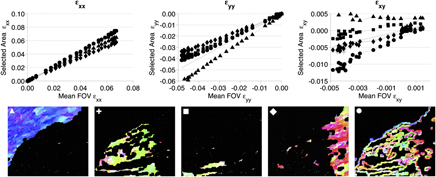Crossref Citations
This article has been cited by the following publications. This list is generated based on data provided by
Crossref.
Kammers, Adam D.
Wongsa-Ngam, Jittraporn
Langdon, Terence G.
and
Daly, Samantha
2015.
The microstructure length scale of strain rate sensitivity in ultrafine-grained aluminum.
Journal of Materials Research,
Vol. 30,
Issue. 7,
p.
981.
Dong, Jinfang
Dong, Qing
Dai, Yongbing
Xing, Hui
Han, Yanfeng
Ma, Jianbo
Zhang, Jiao
Wang, Jun
and
Sun, Baode
2016.
Study on structure homogeneity of plate sample with large dimension during equal channel angular pressing (ECAP).
Journal of Materials Research,
Vol. 31,
Issue. 21,
p.
3420.
Xu, Zebing
Liu, Manping
Jia, Zhihong
and
Roven, Hans J.
2017.
Effect of cryorolling on microstructure and mechanical properties of a peak-aged AA6082 extrusion.
Journal of Alloys and Compounds,
Vol. 695,
Issue. ,
p.
827.
Carson, Robert
Obstalecki, Mark
Miller, Matthew
and
Dawson, Paul
2017.
Characterizing heterogeneous intragranular deformations in polycrystalline solids using diffraction-based and mechanics-based metrics.
Modelling and Simulation in Materials Science and Engineering,
Vol. 25,
Issue. 5,
p.
055008.
Li, Mingjie
Duquette, David J.
and
Chen, Ying
2019.
Deformation Accommodation at Triple Junctions in Columnar-Grained Nickel.
Metallurgical and Materials Transactions A,
Vol. 50,
Issue. 1,
p.
52.
Ivanov, K. V.
2019.
Structural heterogeneity of ultrafine-grained FCC metals processed through equal-channel angular pressing on mesoscale level.
Vol. 2167,
Issue. ,
p.
020140.
Linne, M. A.
Venkataraman, A.
Sangid, M. D.
and
Daly, S.
2019.
Grain Boundary Sliding and Slip Transmission in High Purity Aluminum.
Experimental Mechanics,
Vol. 59,
Issue. 5,
p.
643.
Nnaji, Nnaemeka
Nwaji, Njemuwa
Mack, John
and
Nyokong, Tebello
2019.
Corrosion Resistance of Aluminum against Acid Activation: Impact of Benzothiazole-Substituted Gallium Phthalocyanine.
Molecules,
Vol. 24,
Issue. 1,
p.
207.
Venkataraman, Ajey
Linne, Marissa
Daly, Samantha
and
Sangid, Michael D.
2019.
Criteria for the prevalence of grain boundary sliding as a deformation mechanism.
Materialia,
Vol. 8,
Issue. ,
p.
100499.
Chen, Ling
Liu, Wenyang
and
Song, Lijun
2021.
A multiscale investigation of deformation heterogeneity in additively manufactured 316L stainless steel.
Materials Science and Engineering: A,
Vol. 820,
Issue. ,
p.
141493.
Lane, Ryan J.
Momen, Ayyoub M.
Kesler, Michael S.
Brechtl, Jamieson
Rios, Orlando
Nawaz, Kashif
and
Mirzaeifar, Reza
2021.
Developing an experimental-computational framework to investigate the deformation mechanisms and mechanical properties of Al-8Ce-10Mg alloys at micro and macroscales.
Materials Today Communications,
Vol. 28,
Issue. ,
p.
102674.
Lane, Ryan J.
Kesler, Michael S.
Nawaz, Kashif
and
Mirzaeifar, Reza
2023.
Investigating the failure behavior of cast Al-11Ce-0.4Mg alloys using in-situ scanning electron microscopy tensile testing.
Journal of Alloys and Compounds,
Vol. 947,
Issue. ,
p.
169491.





